Since 2008, through the collective work of the office and thanks to numerous collaborations, we have sought to infuse a utility and a singular expressiveness to each of our projects. Recently, work on the connection between nature and architecture has allowed us to consider the building as an ecosystem that welcomes the living, thus highlighting its ability to carry its own landscape. It is by considering the edge - this in-between - as the place of a collective renewal that, in spite of an increasingly standardized practice, we seek to initiate explorations, to generate a certain permissiveness of use in each of our achievements.
It is in this spirit that we recall the words of Lina Bo Bardi for whom "Architecture finds itself somewhere between collective service and poetry".
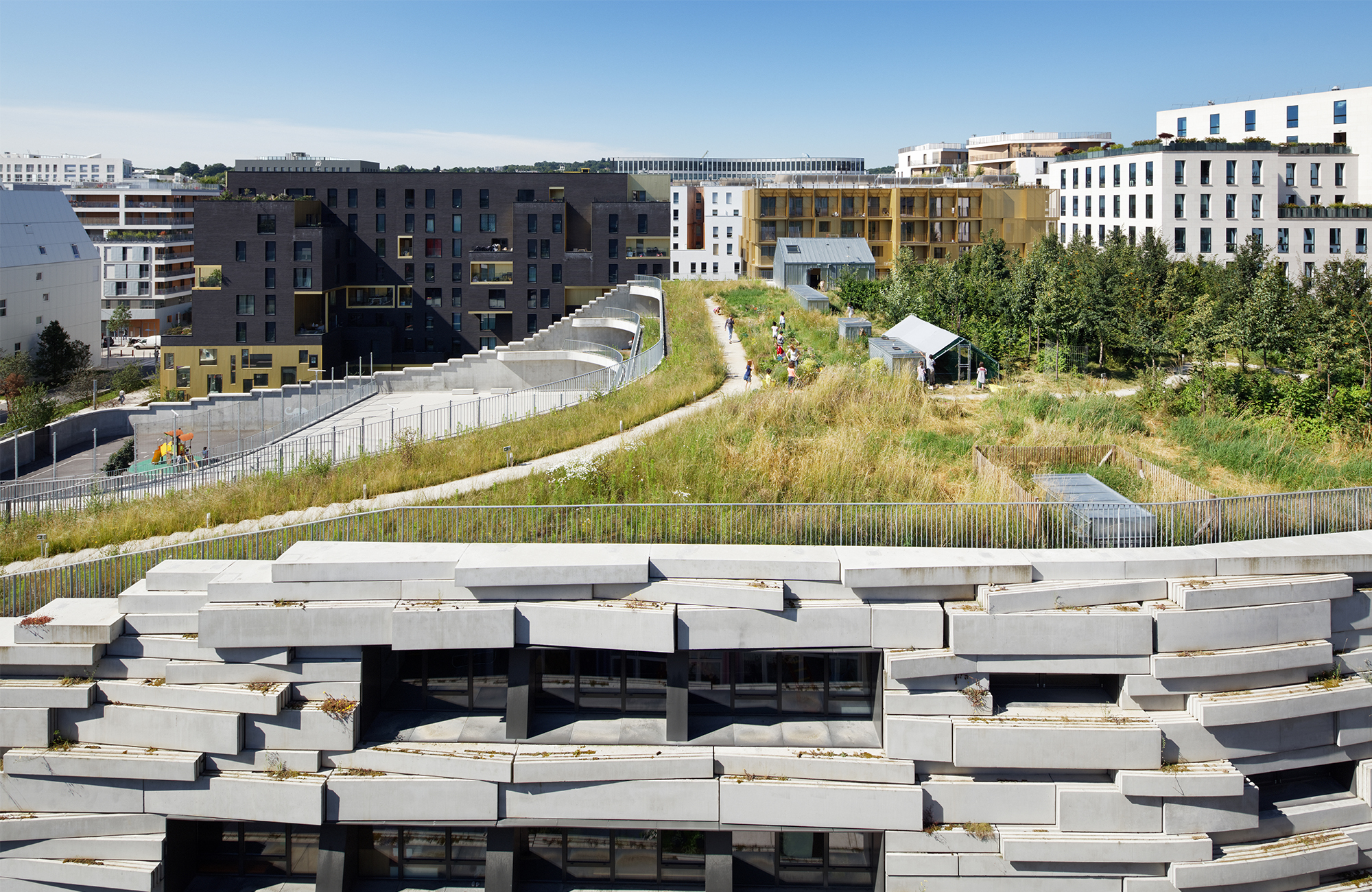
In 2014, ChartierDalix delivered the Boulogne Biodiversity School, whose wall of concrete blocks serves as much as a support for the development of spontaneous vegetation as a shelter for a fauna on site. The morphology of the wall, although very specific, is designed within the regulatory framework of a traditional masonry structure backed by a concrete veil.
Even though today, given the environmental requirements, construction tends to superimpose monofunctional layers (structure/insulation/cladding, etc.), it seems important to us to consider the wall as a more unitary system that could also accommodate the substrate and the forms necessary to host the associated fauna.
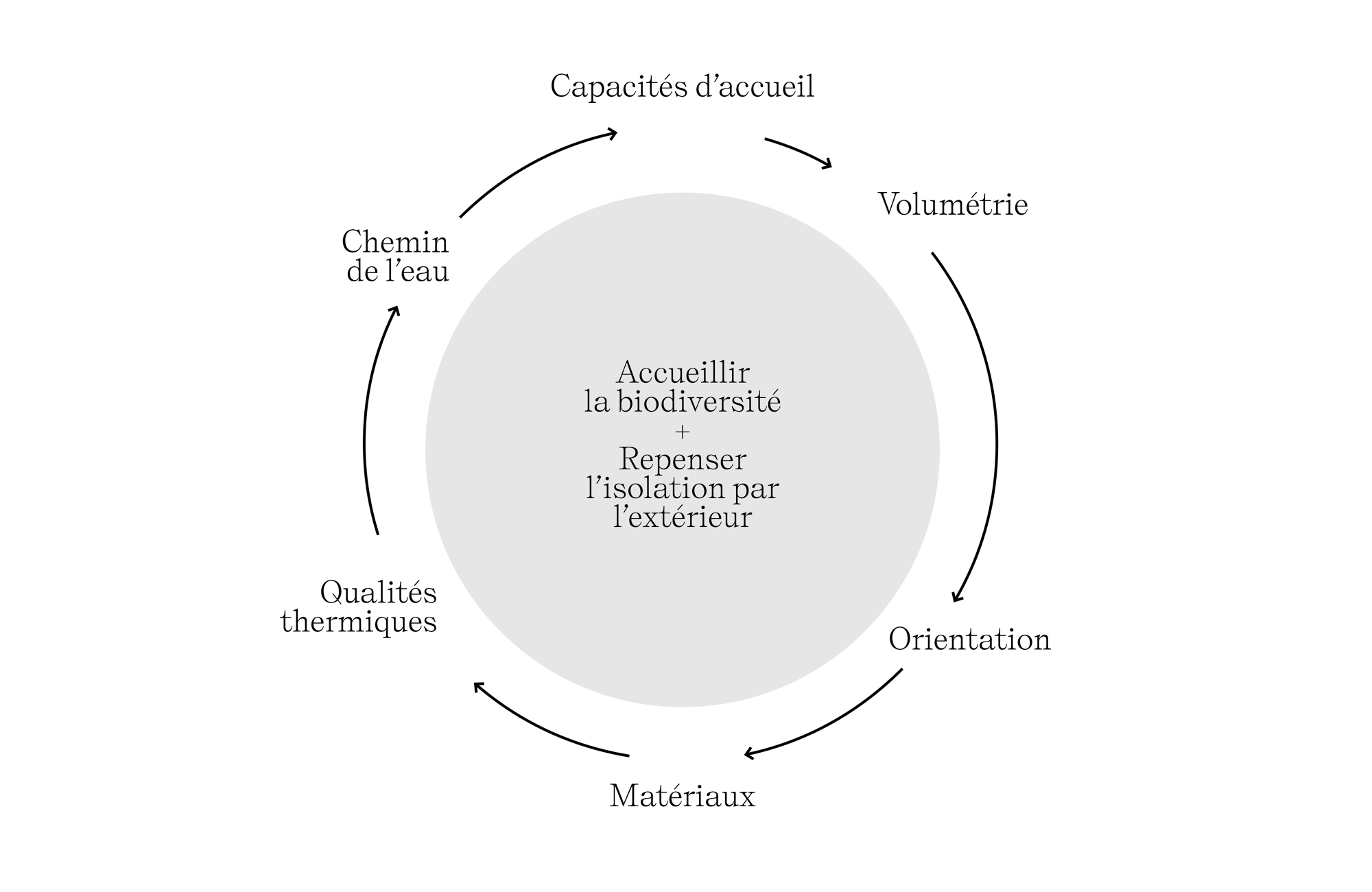
Our first prototypes allow us to test the concrete material and its ability to embody all the properties studied: insulation/ structure/ a substrate network/ porous surface for plant expression and inclusion of nest boxes.
In 2017, a visit to CEMEX's research and development laboratory gave us the opportunity to experiment with different types of concrete by integrating pockets of substrate and voids to represent the different accidents or reliefs likely to host fauna and flora on the façade.
We brought back to Paris the first prototype named FAIRE: cut in half in the lab, it allows us to observe the evolution of seeds in the network formed by the balls of earth.

In the spring of 2018, we got closer to the artist Maurizio Montalti, whose work is centered around mycelium, the vegetative apparatus of fungus that provides several biological functions. Integrated into our prototypes, we are testing its bio-regenerative potential.
Seeded by Topager (an urban landscape company), our prototypes start to "live". Accompanied by the National Museum of Natural History and the ARB (regional agency for biodiversity), we observe their evolution and evaluate their capacity to regenerate over time.

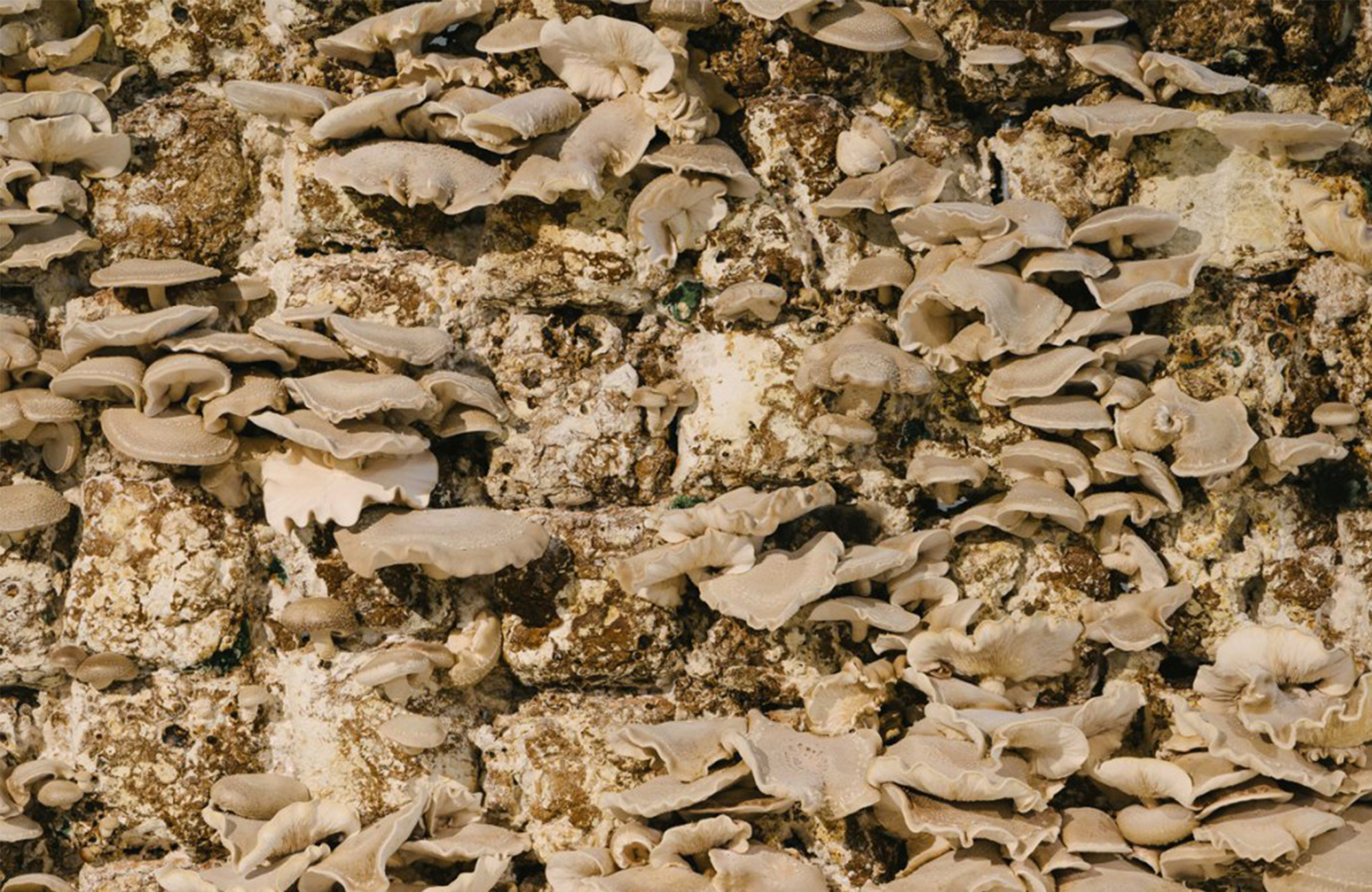
In the continuation of our winning project of "FAIRE" (call for projects launched in 2017 by the Pavillon de l'Arsenal), we wish to find a development opportunity by applying our research to the fabrication of a pavilion, a small building or a large-scale façade element.
In parallel, since October 2019 we have been hosting a PhD student (Cifre thesis), Delphine Lewandowski, in our Research division, in collaboration with the Museum of Natural History and the GSA (Geometry Structure Architecture) laboratory, to explore the new technical, aesthetic and material avenues that our biodiverse walls imply1.
Between 2020 and 2021 the continuation of our research finds its application in two distinct projects:
- The development of a biodiverse concrete vêture for the APHP headquarters project with the company CBC.
- The development of three prototype high walls in masonry elements.
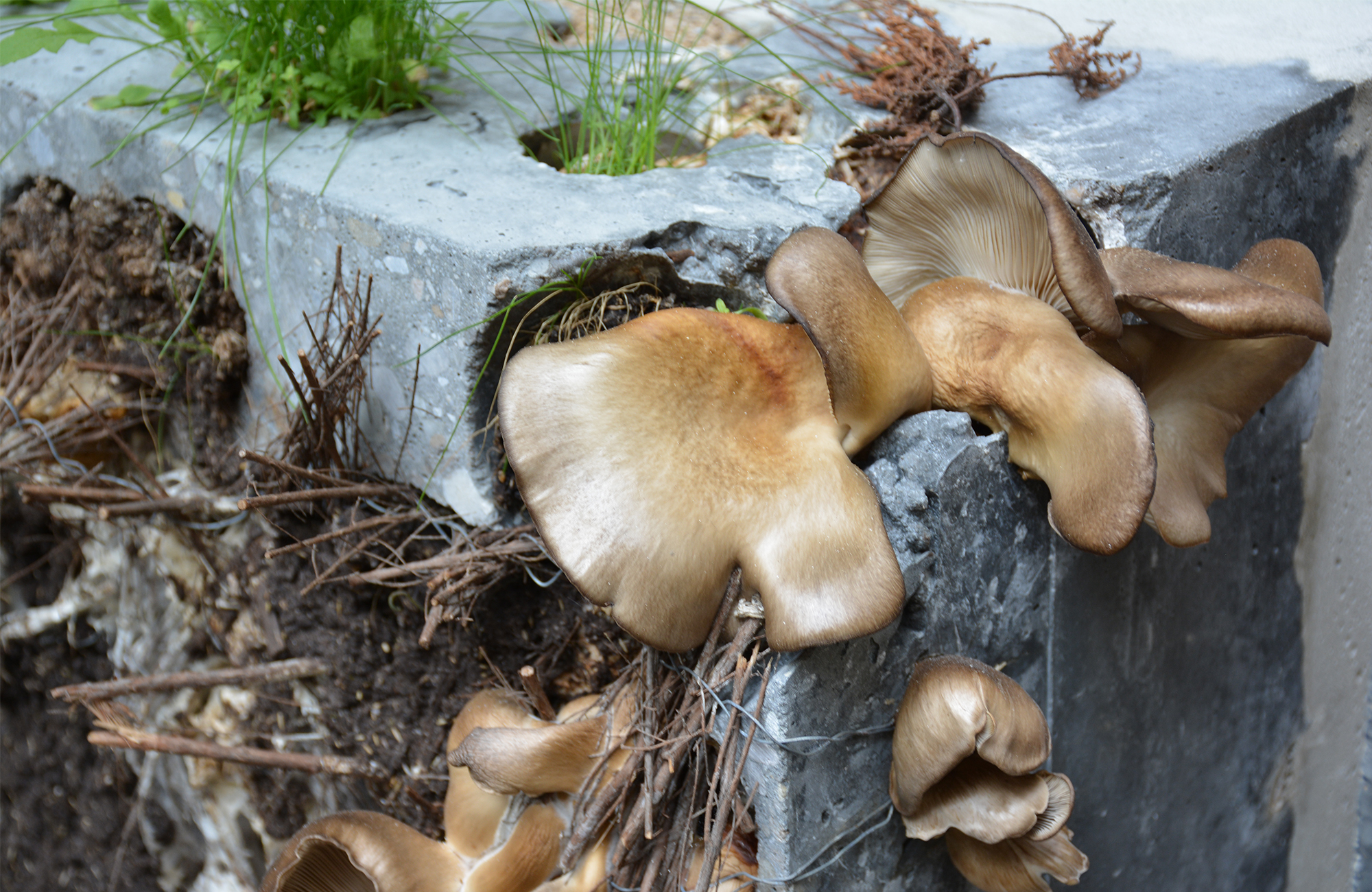
This is a new type of vertical vegetation system designed to promote biodiversity in dense cities by welcoming local and indigenous flora and fauna. Rather than an fully covered vertical garden generally composed of exotic plants, it is an inhabited wall with a unique architectural quality, which gives the opportunity for plants to settle sustainably and which is more autonomous than the hydroponic systems of green walls.
The originality of this system compared to existing vertical vegetation systems is the continuity of a substrate network inside a self-supporting wall. The substrate is protected by a surface layer about ten centimeters thick and pierced with cavities in which the plants grow.
The design of the continuous network of substrate in the wall, aims at both the ecological continuity of a "living" substrate, and the retention of water, in order to allow the plants to develop in a perennial way, thanks to a larger space dedicated to the root systems.
It is a three-layer system composed of :
1) A perforated surface layer with piercings in the form of sacks to accommodate plant and animal species and to retain water and matter
2) A continuous layer of more or less labyrinthine substrate with high water retention
3) A load-bearing wall isolated from the rest of the system, whose geometry can help carry the substrate layer.

The system is designed to provide the technical and biological conditions favorable to the reception - development, sustainable settlement, regeneration - of biodiversity. It is based on the specifications described below:
Continuity of the substrate in the wall:
- Allows the root systems of plants to have enough space to develop and maintain themselves.
- With a substantial volume of substrate available, it offers sufficient reserves of mineral nutrients and water available to plants.
- Can accommodate a wider range of plant species than existing green walls on the market.
- Also allows a sufficiently "slow" flow of water inside the wall to water the plants by capillary action.
- Promotes the regeneration of the wall environment: the volume of roots favors the richness of the soil life (micro and macro fauna) and the creation of biomass (root excretion process).
Wall surface layer:
- Insulates the substrate from the outside air and protects it from thermal shocks (drought/freeze) and evapotranspiration (non-direct exposure to the atmosphere).
- In the same way, it allows the condensation and the retention of water in the substrate layer to water the plants by capillary action.
- Hosts plant and animal species. The cavities of the surface layer of the wall connect the outside air and the substrate and give the plants access to water and light. In the form of sacks, these allow water to be retained and to limit the erosion of the substrate available for the plants.
The substrate :
The substrate is a light substrate, but with a rich organic part, already widespread in the vegetation of roofs.
Plant Community:
The community chosen for the wall favors native and local Ile-de-France xerophytic plants (which require little maintenance and are resistant to drought), which are vectors of local biodiversity. Depending on the orientation and humidity of the wall (bottom or top of the wall), certain muricolous species known to grow on old walls, or herbaceous undergrowth, may be preferred.
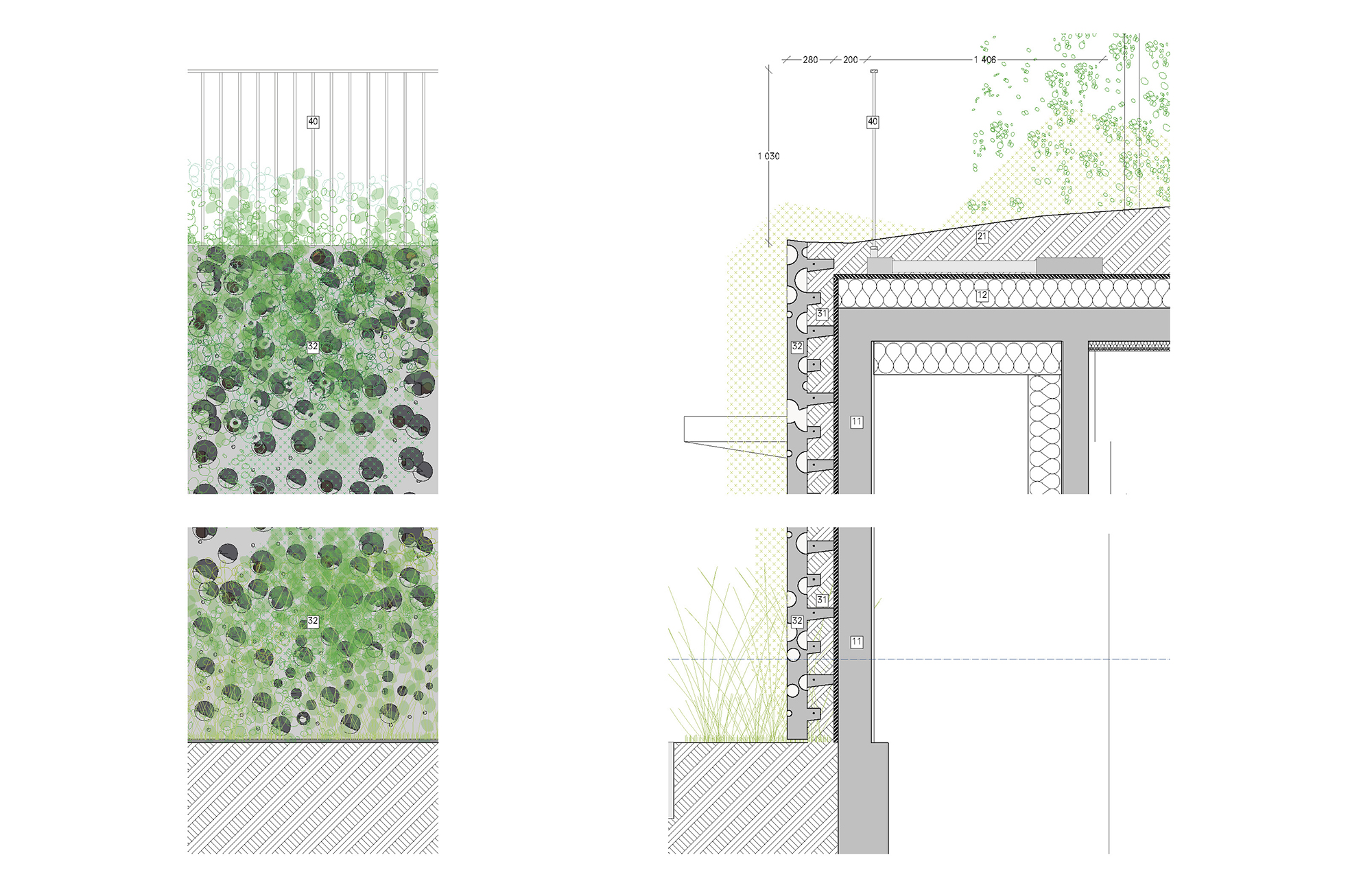
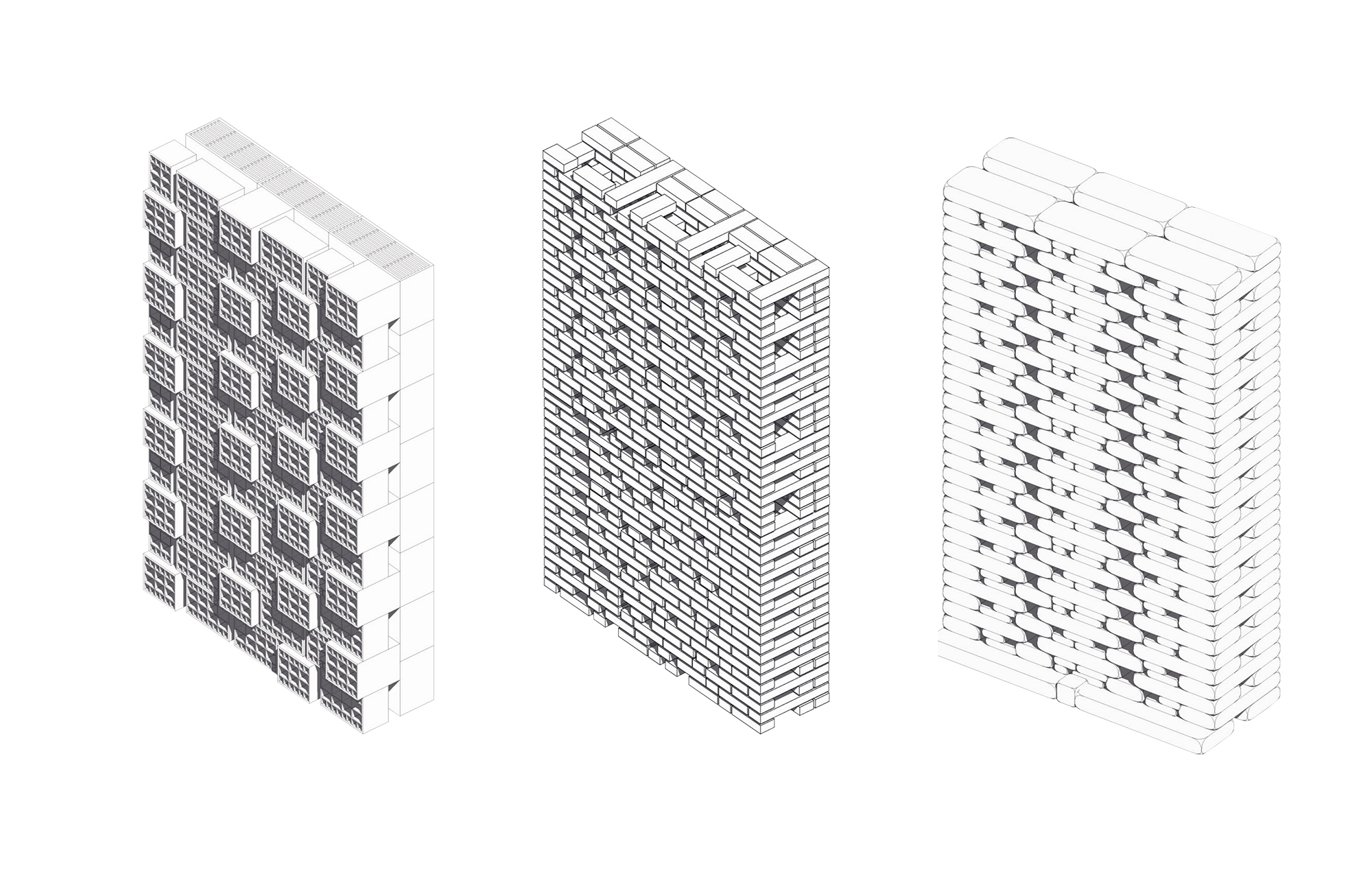
2010 - 2014 : studies and realization of the project of the School of Sciences and Biodiversity, Boulogne-Billancourt (92)
2017 : winner of the FAIRE project (Pavillon de l'Arsenal) for a research on the reception of the living in architecture. In partnership with Philippe Clergeau, from the National Museum of Natural History, Marc Barra from the Regional Agency for Biodiversity and the company TOPAGER
November 2017 : first experiments with concrete prototypes made in partnership with the company CEMEX in its R&D laboratory in Switzerland. The prototypes are brought back to Paris and seeded by TOPAGER
March 2018 : Mycelium workshops in collaboration with the artist Maurizio Montalti, to exploit the bio-regenerative potential of this living material in our prototypes
August 2019 : winner of the APHP project in design-build with the company CBC and start of large-scale experimentation of a 390 m² living wall in concrete
September 2019 : Publication of the book Hosting life : Architecture as an ecosystem
October 2019 : start of Delphine Lewandowski's Cifre thesis on biodiverse walls, under the direction of Robert Le Roy (GSA-ENSA Paris-Malaquais laboratory) and Philippe Clergeau (CESCO-National Museum of Natural History)
2020-2021 : realization of a pavilion presenting six masonry prototypes of three materials - monomur brick, solid brick, dry stone - installed in the National Museum of Natural History. Collection of data on the installation of the living / realization of prototypes for the headquarters of the AP-HP wall
May - October 2022 : presentation of a pavilion for the Métropole du Grand Paris as part of the Architecture and Landscape Biennale of Île-de-France in Versailles
July 2022 : delivery of the headquarters of AP-HP
_________________________________________________________________
1. Vers une conception biodiversitaire des façades. Propositions techniques et recommandations professionnelles [Towards a biodiverse design of facades. Technical proposals and professional recommendations], Delphine Lewandowski, under the direction of Robert Le Roy (GSA-ENSAPM laboratory) and Philippe Clergeau (CESCO-MNHN).